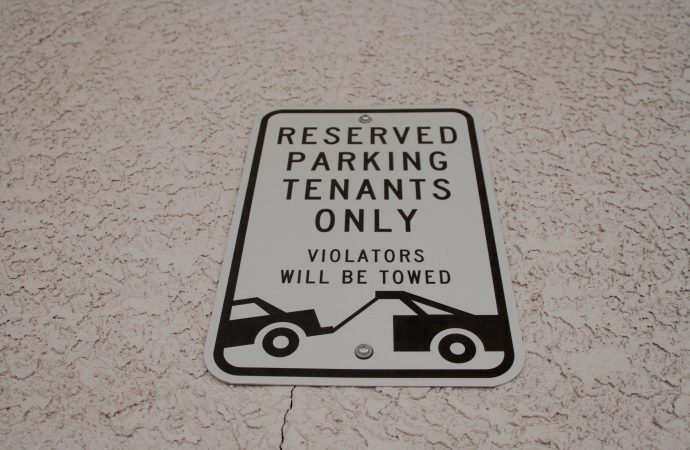Are you considering shared ownership of a property? Joint tenancy can be an excellent way to split the costs and responsibilities of owning a home or investment property with another person or group. However, creating a joint tenancy agreement can be complex and overwhelming, especially if you’re new to real estate law. Don’t worry –
Are you considering shared ownership of a property? Joint tenancy can be an excellent way to split the costs and responsibilities of owning a home or investment property with another person or group. However, creating a joint tenancy agreement can be complex and overwhelming, especially if you’re new to real estate law. Don’t worry – in this blog post, we’ll share some essential tips and advice for how to create a joint tenancy agreement that works for everyone involved. Whether you’re planning on buying your first rental property with friends or sharing ownership of a family vacation home, keep reading for everything you need to know about drafting an effective joint tenancy agreement!
What is a Joint Tenancy Agreement?
A joint tenancy agreement is a contract between two or more people who agree to share ownership of a property. The agreement outlines the terms of the tenancy, including the rights and responsibilities of each tenant.
A joint tenancy agreement can be used for any type of property, but is most commonly used for apartments, houses, and other residential rental units. The agreement can be oral or written, but it is generally advisable to have a written agreement to avoid misunderstandings later on.
If you are considering entering into a joint tenancy agreement, there are a few things to keep in mind. First, all tenants must have an equal right to the property. This means that each tenant has an equal say in decisions about the property, such as whether to sell or make changes to the unit.
Second, all tenants are jointly and severally liable for rent and other obligations under the lease. This means that if one tenant fails to pay rent or damages the property, the other tenants are responsible for making up the difference.
Third, each tenant has a right of survivorship. This means that if one tenant dies, their interest in the property passes to the surviving tenants. fourth and finally Before signing a joint tenancy agreement, it is important to consult with an attorney or real estate professional to ensure that the agreement meets your needs and protects your interests.
Why You Should Have a Joint Tenancy Agreement
There are many reasons why you should have a joint tenancy agreement in place if you are sharing property ownership with someone else. For one, it can help to prevent any misunderstandings about who is responsible for what expenses related to the property. Additionally, a joint tenancy agreement can provide clarity on what would happen if one of the owners decides to sell their interest in the property or if the property is sold.
Furthermore, having a joint tenancy agreement can protect your rights as an owner if the other owner dies. Without an agreement in place, the estate of the deceased owner could take ownership of the entire property. However, with a joint tenancy agreement, you would be able to retain your ownership interest in the property. Finally, a joint tenancy agreement can help to ensure that both owners are treated fairly if one owner stops making mortgage payments or otherwise defaults on their obligations related to the property.
How to Create a Joint Tenancy Agreement
In order to create a joint tenancy agreement, there are a few important things to keep in mind. First, all joint tenants must have an equal interest in the property. This means that each tenant must own an undivided interest in the entire property, and each tenant has the right to use and possess the entire property. Second, all joint tenants must have the same rights to possession of the property. This means that each tenant has an equal right to live in and use the property, regardless of who actually pays for it. Finally, all joint tenants must agree to hold the property for the same duration of time. This means that if one tenant wants to sell or move out of the property, they must first get permission from all of the other tenants.
If you’re thinking about creating a joint tenancy agreement with another person, it’s important to consult with an experienced attorney who can help you draft a legally-binding document. An attorney can also help you understand your rights and obligations as a joint tenant, and can answer any questions you may have about shared ownership of property.
What to Include in Your Joint Tenancy Agreement
If you’re planning to buy or rent a property with another person, it’s important to have a joint tenancy agreement in place. This document sets out the rights and responsibilities of both parties, and can help avoid any disagreements down the line.
So, what should you include in your joint tenancy agreement? Here are some key points to consider:
– The names of all parties involved.
– The address of the property.
– The date the agreement starts and ends.
– How long each party has the right to live in the property.
– What bills each party is responsible for covering.
– Who will be responsible for maintaining the property.
– What happens if one party wants to leave early.
By including all of these points in your agreement, you can be sure that both parties are clear on their roles and obligations. This can help prevent any misunderstandings or disputes further down the line.
Tips for Creating a Successful Joint Tenancy Agreement
If you’re considering purchasing a property with another person, it’s important to create a joint tenancy agreement. This document outlines the rights and responsibilities of each tenant, and can help avoid conflict down the road. Here are some tips for creating a successful joint tenancy agreement:
1. Define the roles of each tenant. Who will be responsible for paying the mortgage, taxes, and other expenses? Will both tenants have an equal say in decision-making, or will one tenant have primary control? Be sure to spell out these roles in the agreement.
2. Determine how long the agreement will last. A joint tenancy agreement can be for a set period of time (e.g., 5 years) or it can be open-ended. If you choose an open-ended agreement, include provisions for how it can be terminated (e.g., by either tenant giving written notice).
3. Outline what will happen if one tenant wants to sell their interest in the property. Will the other tenant have the right of first refusal? Or will the property be put on the market and sold to the highest bidder? Again, these details should be included in the agreement.
4. Specify what will happen if one tenant dies. Will the surviving tenant inherit their interest in the property? Or will the property be sold and the proceeds divided between both tenants’ heirs? Make sure these wishes are clearly stated in the agreement.
5. Get everything in
Conclusion
Creating a joint tenancy agreement is a great way to ensure that all parties involved in a shared property are protected and their rights respected. With these tips, we hope that you now have the information necessary to create your own customized joint tenancy agreement. As always, it’s important to consult with an experienced legal professional when drafting any contractual document like this so that you can be sure of its legality and compliance with local laws. Good luck as you get started on creating your joint tenancy agreement!





















Leave a Comment
Your email address will not be published. Required fields are marked with *